How To Set Distributor Timing On Chevy 350

Dropping a distributor into the engine is a time-honored procedure that has been around since the first engines coughed their way to life more than 100 years ago.
With the latest generation of distributor-less engines, this tribal knowledge has slipped from its "must-know" status. But if you are working on an older engine with a distributor, this is essential information.
The process is easy and it will take longer to read about than to actually perform the task, so let's get started.
For this procedure, we will use a small-block Chevy because that was the closest engine for the photos. However, the process we'll describe is exactly the same for any four-stroke engine.
Our particular engine is a brand new Chevrolet Goodwrench crate engine on which we've already installed a new intake manifold.
In our case, the spark plugs were all removed, which makes turning the engine over very easy. If the engine is in the car, you can use the starter motor to crank the engine.
With the Number One spark plug removed, place your thumb over the hole while turning the engine. Once you feel compression building, look for the zero mark on the harmonic balancer to approach the timing tag. We prefer to set the initial timing for most engines at 10 degrees Before Top Dead Center (BTDC).
With that set, remove the cap from the distributor. We're using a Summit HEI distributor. We use a black Sharpie to place a mark on the distributor body where we want the Number One spark plug wire to be located. This can be placed anywhere you like, but if you are a Chevrolet traditionalist, this ends up roughly at about the 5 o'clock position on the distributor as you are looking at it from the front of the engine.
Also place a mark on the corresponding Number One plug wire position on the distributor cap. We used a piece of masking tape.
With these marks in place, drop the distributor with the gasket into the distributor hole with the rotor pointing near the Number One mark.
As the distributor drive gear engages the teeth on the camshaft, this will move the rotor slightly clockwise. Position the distributor so that the vacuum advance canister is located on the passenger side of the engine pointing roughly forward. If the rotor is not pointed close to the Number One mark, pull the distributor and re-position the rotor until it comes close.
Unless you are very lucky, the distributor will not drop fully into the intake manifold. In almost all cases, the distributor will sit about 3/8 inch off of the manifold. This is normal and is caused by the oil pump drive not engaged into the drive tang in the distributor. You can remove the distributor and try to re-orient the oil pump drive slot with a long straight screwdriver, but this is somewhat difficult.
It's easier to leave the distributor in place and then bump the engine with the starter motor while placing very light downward pressure on the distributor body. After a half rotation or so, the distributor will drop in place. Now we will need to crank the engine until again it is located at 10 degrees BTDC. With this accomplished, check to ensure the rotor is pointed near the mark on the distributor body for Number One spark plug wire. If the rotor is not pointing at Number One, you could twist the distributor body, but if it is off by more than one tooth, this will require turning the distributor body too far. Instead, you will need to remove the distributor and repeat the previous process as the rotor is not in the correct position.
With the rotor close to the Number One position, twist the distributor body until the rotor points directly at the Number One spark plug terminal position mark on the distributor. Now install the distributor cap and cinch the distributor body down to the intake manifold with the hold-down clamp. Tighten this lightly—we may have to move it again when the engine starts.
With the distributor in place, install all of the spark plugs. Now we can connect the spark plug wires to the distributor.
Let's assume that you've never done this before. Before we can place the wires in the distributor cap, the first thing we need to know is which direction the rotor turns.
For our Chevrolet engine you'll note that the rotor turns clockwise. Small- and big-block Fords turn counter-clockwise.
…
Tech Tip: One quick way to tell on any vacuum advance style distributor is to lay your hand parallel with the vacuum advance canister and then curl your fingers inward toward the middle of the distributor body. The direction your fingers point is the direction of rotor movement. On a Chevy distributor, you would use your left hand, and on a Ford you'll use your right hand. This is a cool little trick you can use on any distributor to determine its rotation.
…
On small- and big-block Chevy engines, the Number One cylinder is always the driver's side front.
Chevrolet also numbers its cylinders with odd numbers on the left (driver) side and even cylinders on the right.
The left side is numbered 1-3-5-7, and the right side is 2-4-6-8.
Ford does it differently. Ford numbers its cylinders with Number One on the right front, numbered on the right side 1-2-3-4 with the left side 5-6-7-8. Other manufacturers number their cylinders differently, so you should check online if you're not sure.
See OnAllCylinders' firing order cheat sheet for installing the plug wires in the correct order.
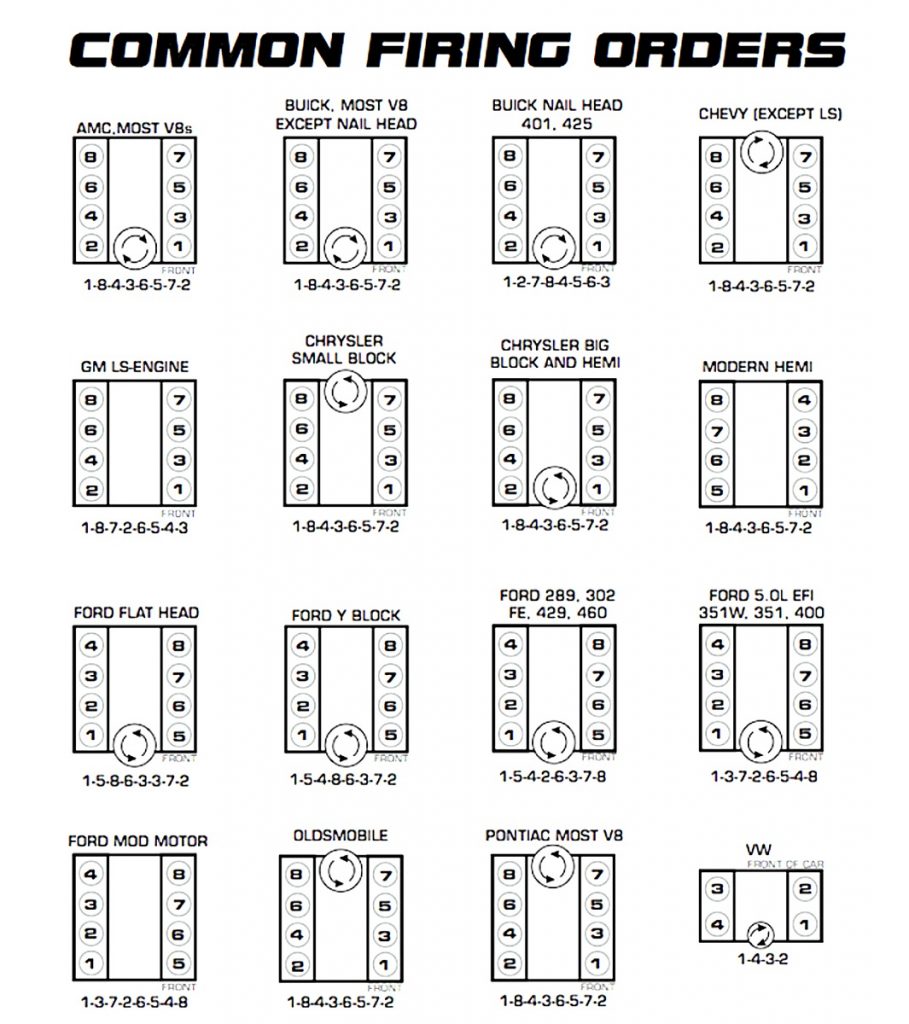
Our small-block Chevy firing order is 1-8-4-3-6-5-7-2, so that's the order in which we will install the plug wires.
We started with Number One and worked our way around the distributor cap clockwise using a set of Summit spark plug wires. The best way to do this so you don't get confused is to just follow the firing order installing each plug wire through the order.
Leave a little extra room with the spark plug wires to allow freedom of movement in the distributor. For Chevys, be careful to make sure 5 and 7 are installed correctly. If the wires are accidentally switched, the engine will not be happy.
Before we try to start the engine, be sure the distributor is connected to switched power. With an HEI distributor, there is a three-wire inboard connector between the HEI module and the cap.
On the outboard side of this connector, there are two smaller individual connectors—one for power from the ignition switch (marked BATT) and the other for a tach. With those connections in place and the distributor, plugs, and wires connected, we're almost ready to start the engine.
Connect a timing light to the Number One cylinder. Now we're ready to fire the engine. Assuming the engine starts, make sure the engine is idling at proper idle speed and not on the fast-idle cam of the choke.
It's important that the engine be idling at its warm-idle rpm. It's likely that our static ignition timing at the crankshaft at idle may not be the desired 10 degrees BTDC.
If it must be changed, merely loosen the hold-down nut and adjust the distributor until the initial timing on the crankshaft is at the desired timing figure. Of course, you are free at this point to set the initial timing at its proper spec.
We will save the discussion about initial, mechanical, and vacuum advance for a subsequent story, but you now have the distributor set in place and the plug wires installed correctly and it's entirely possible that the engine will run much better now with a properly timed ignition.
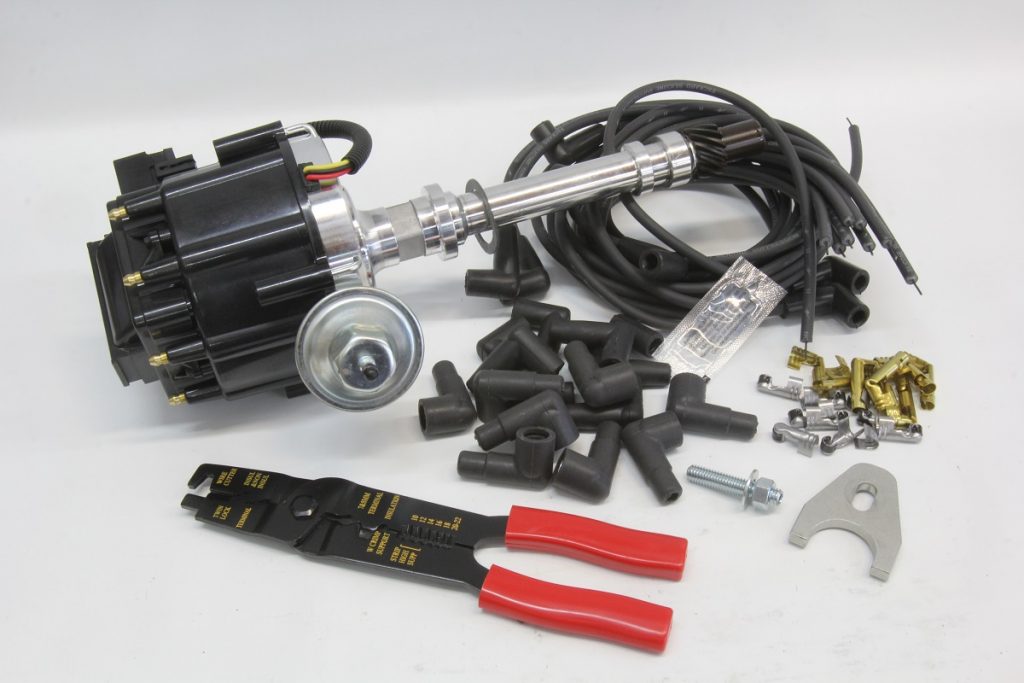
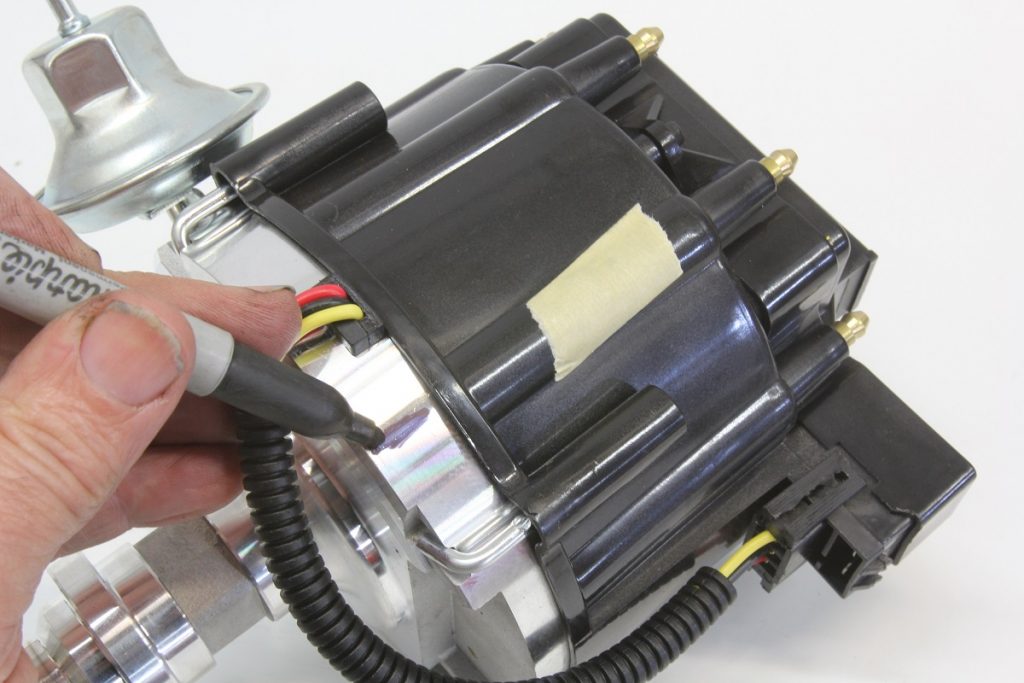
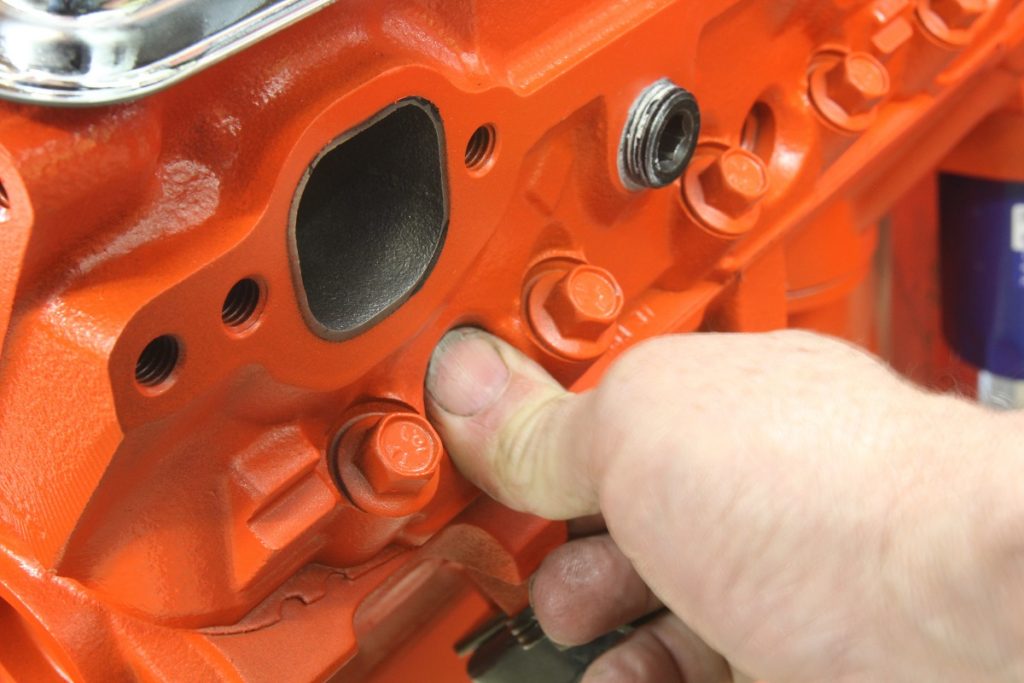
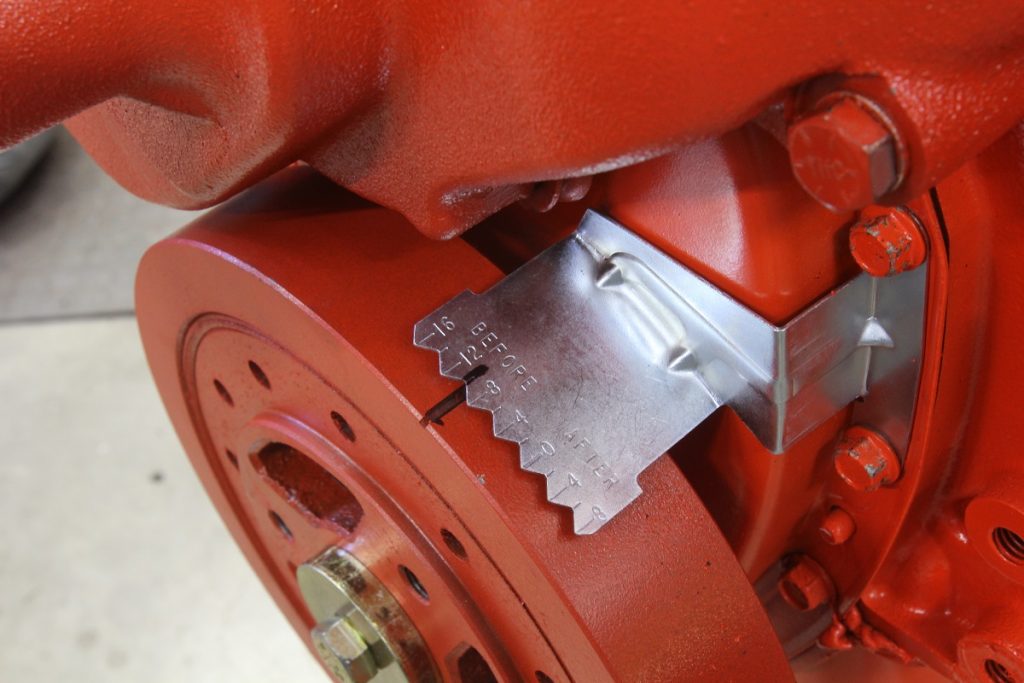
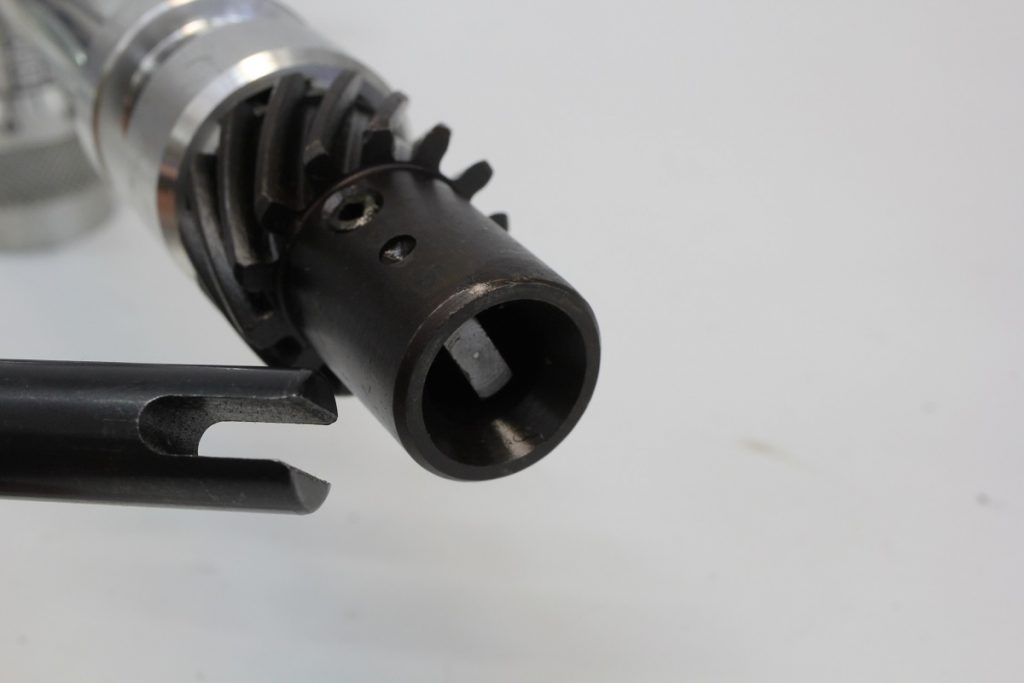
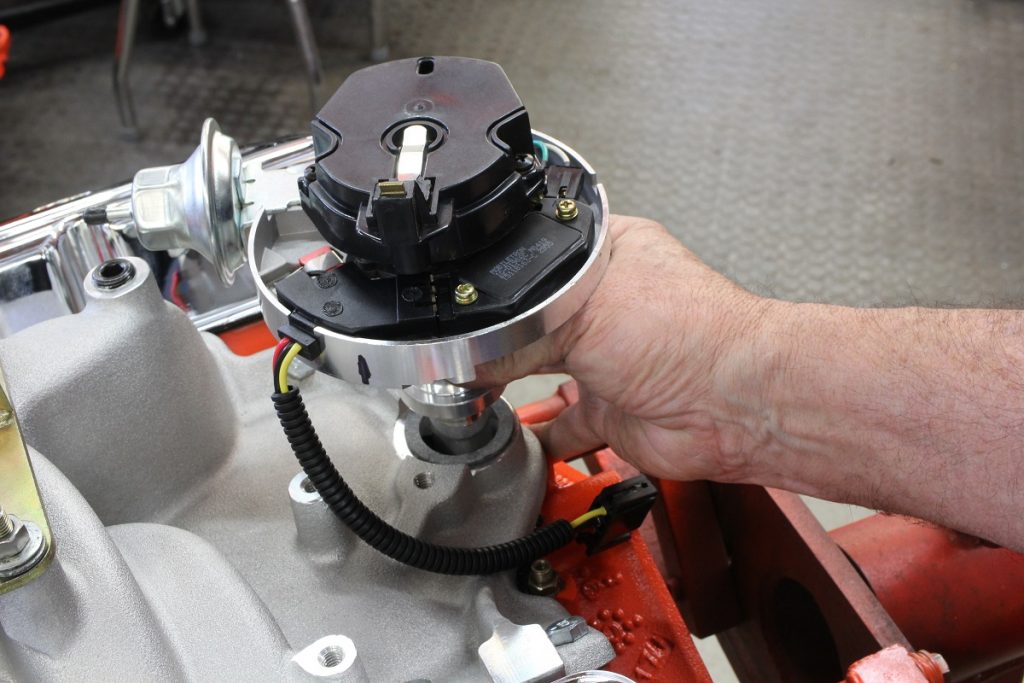
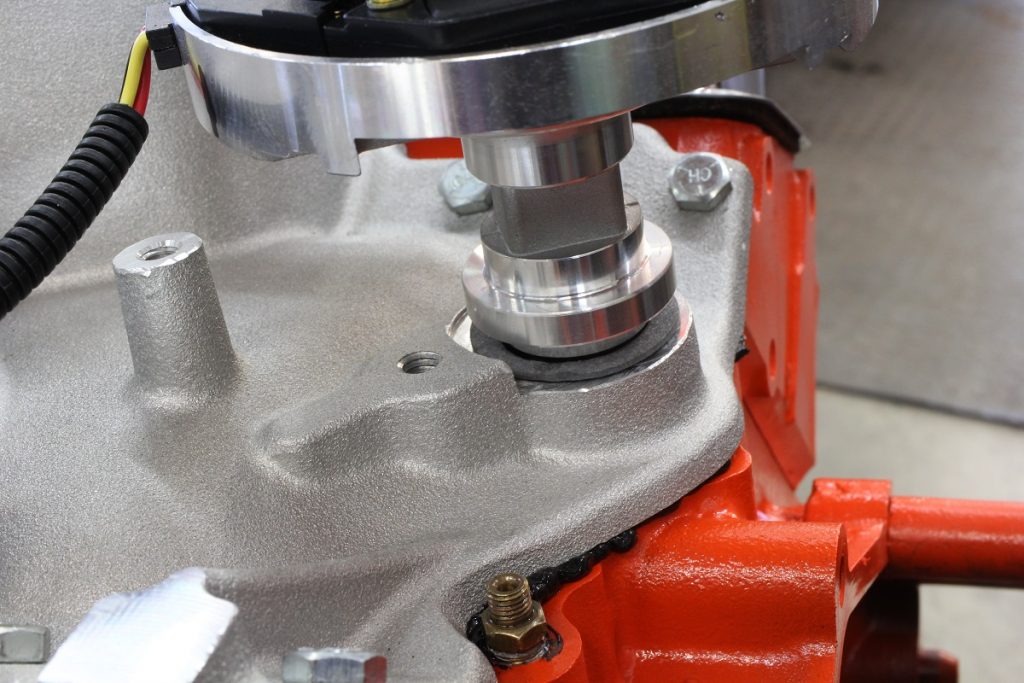
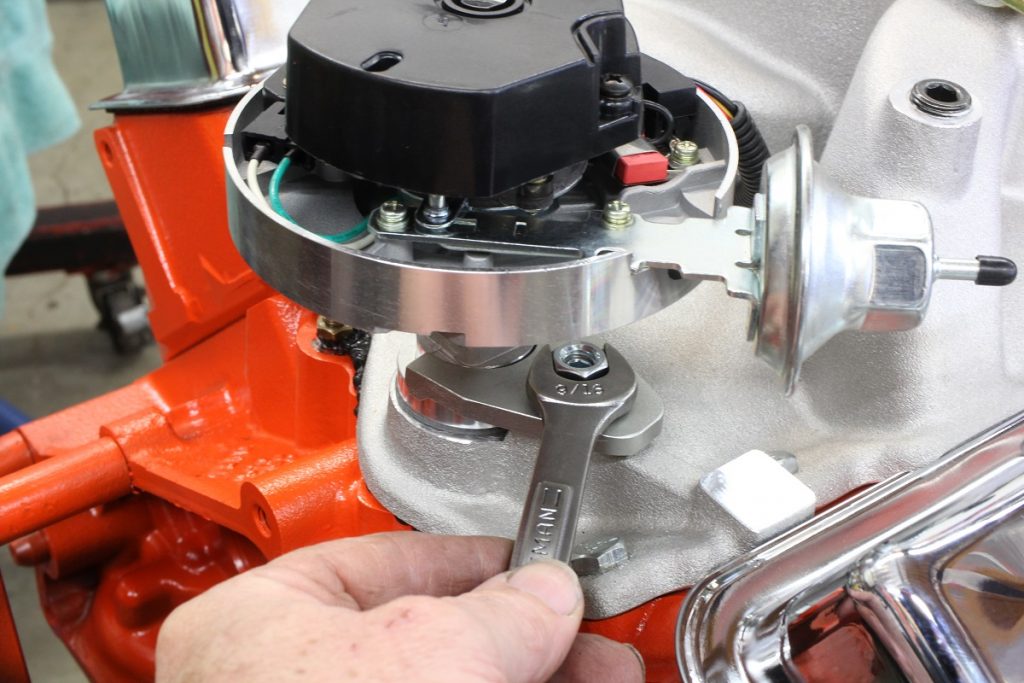
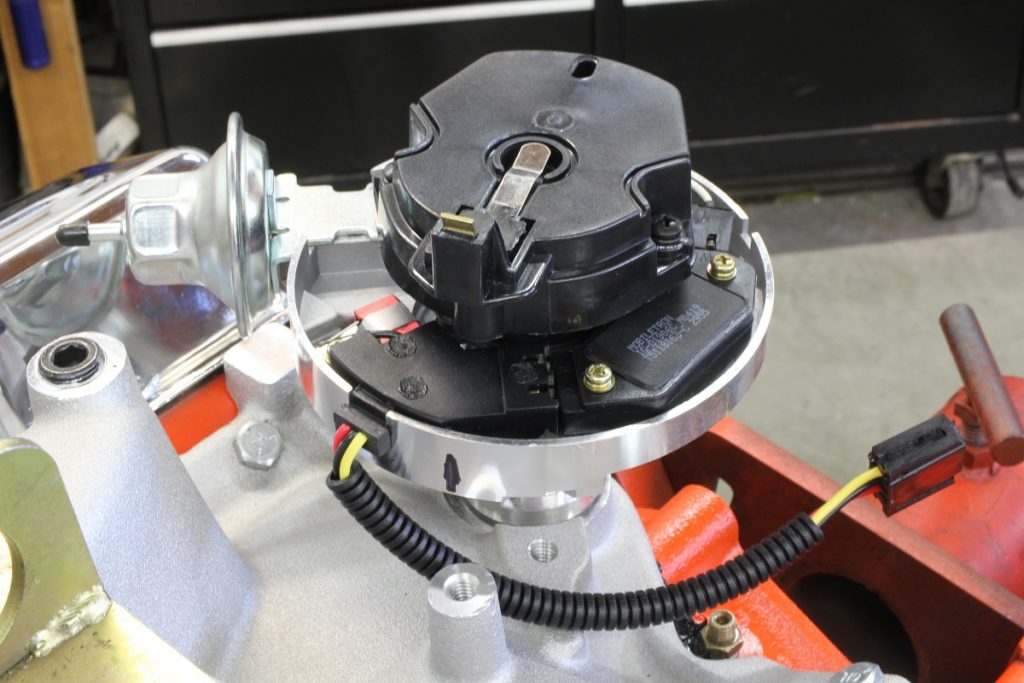
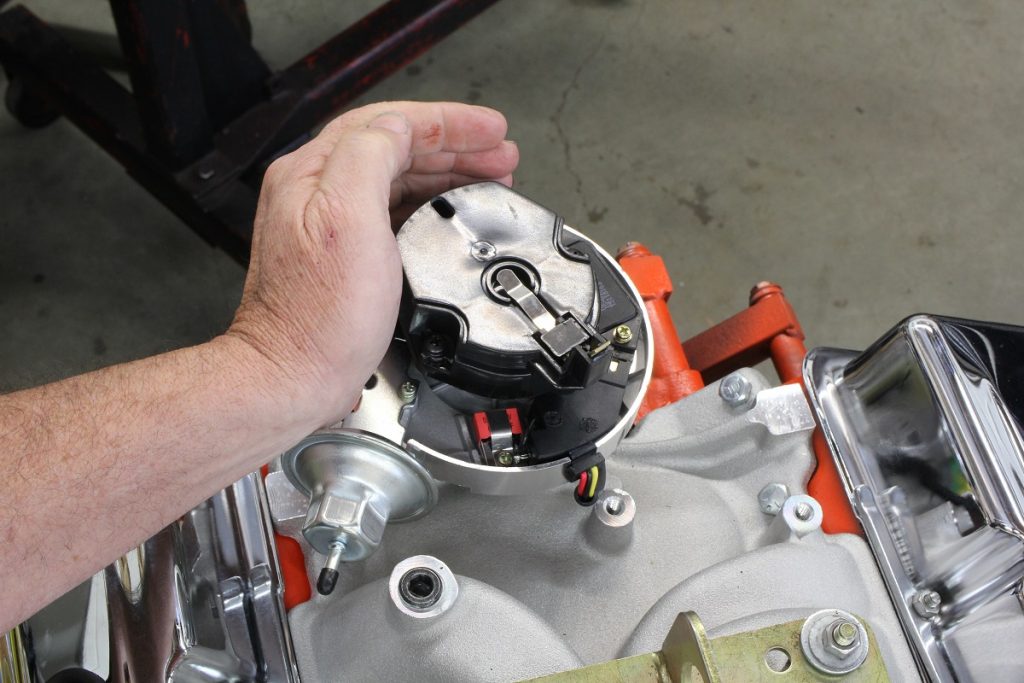
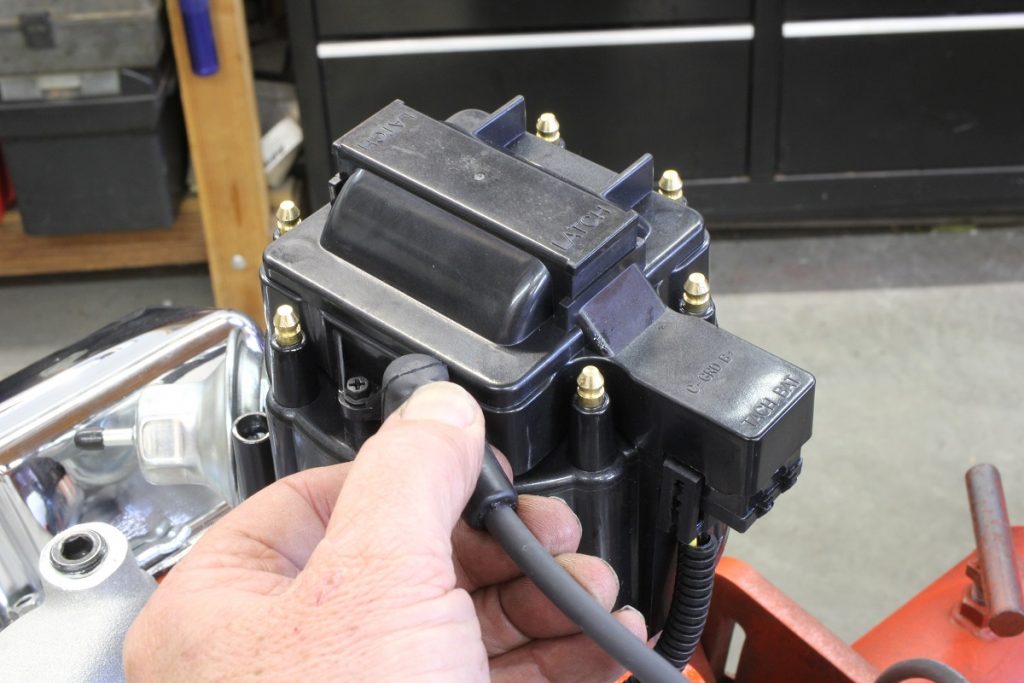
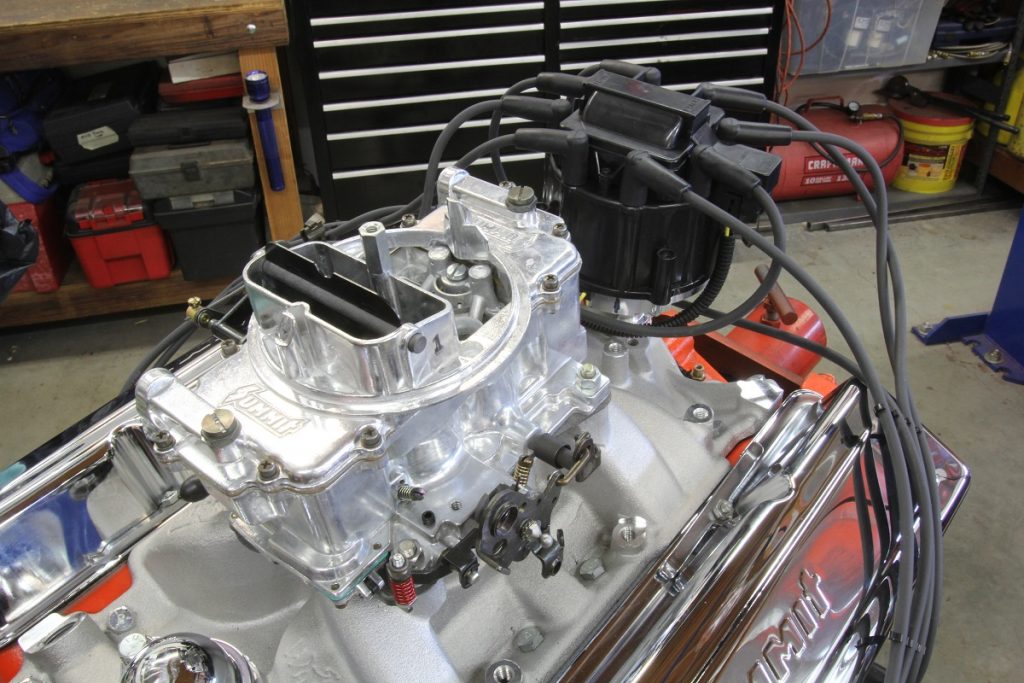
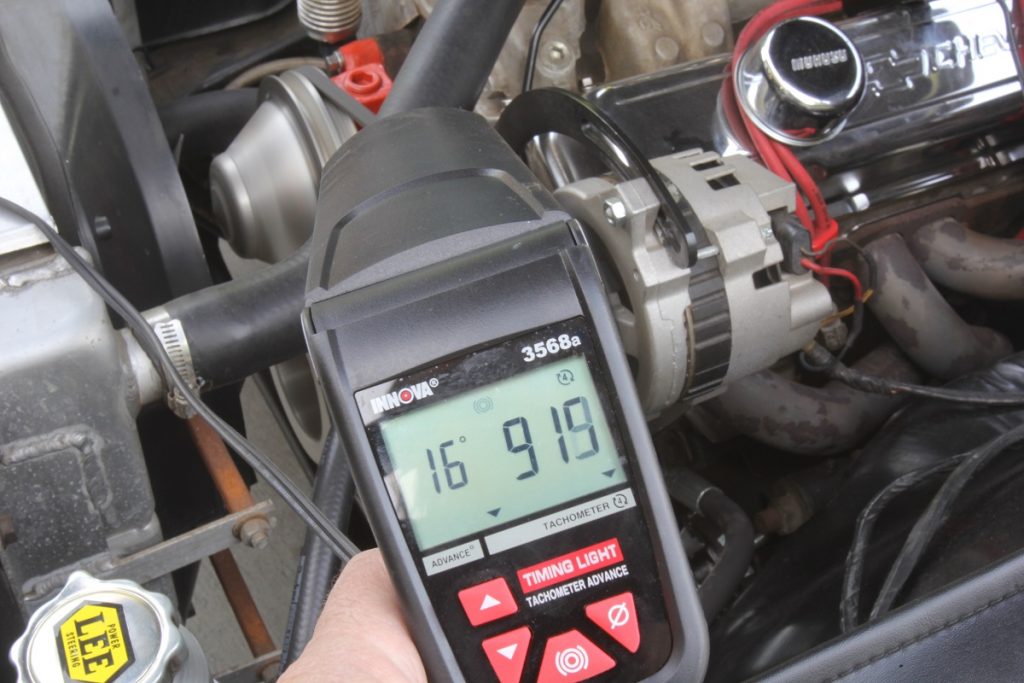
Author: Jeff Smith Jeff Smith has had a passion for cars since he began working at his grandfather's gas station at the age 10. After graduating from Iowa State University with a journalism degree in 1978, he combined his two passions: cars and writing. Smith began writing for Car Craft magazine in 1979 and became editor in 1984. In 1987, he assumed the role of editor for Hot Rod magazine before returning to his first love of writing technical stories. Since 2003, Jeff has held various positions at Car Craft (including editor), has written books on small block Chevy performance, and even cultivated an impressive collection of 1965 and 1966 Chevelles. Now he serves as a regular contributor to OnAllCylinders.
How To Set Distributor Timing On Chevy 350
Source: https://www.onallcylinders.com/2020/04/16/how-to-install-a-distributor-and-set-initial-timing/
Posted by: pressleytheartumety.blogspot.com

0 Response to "How To Set Distributor Timing On Chevy 350"
Post a Comment